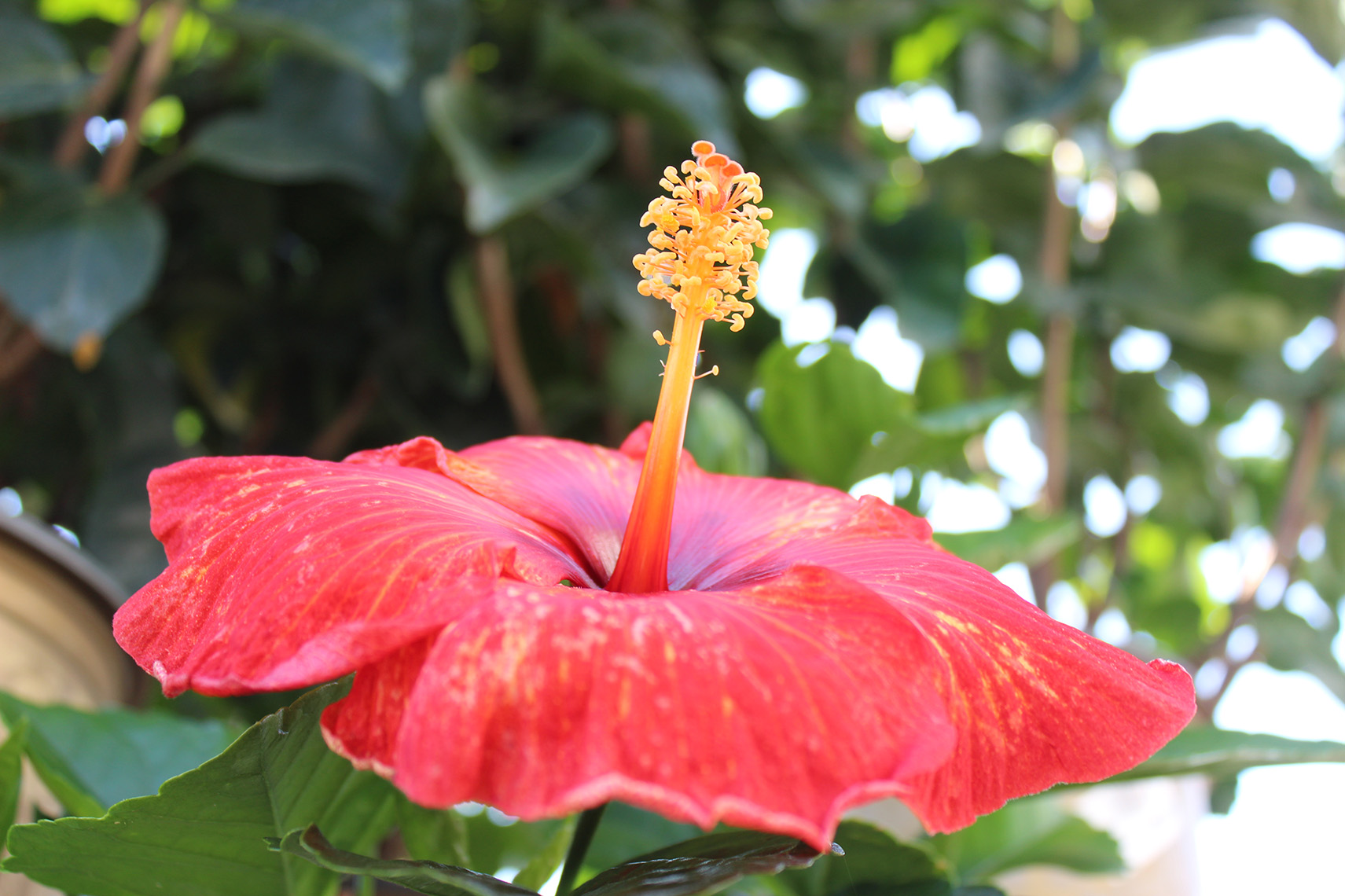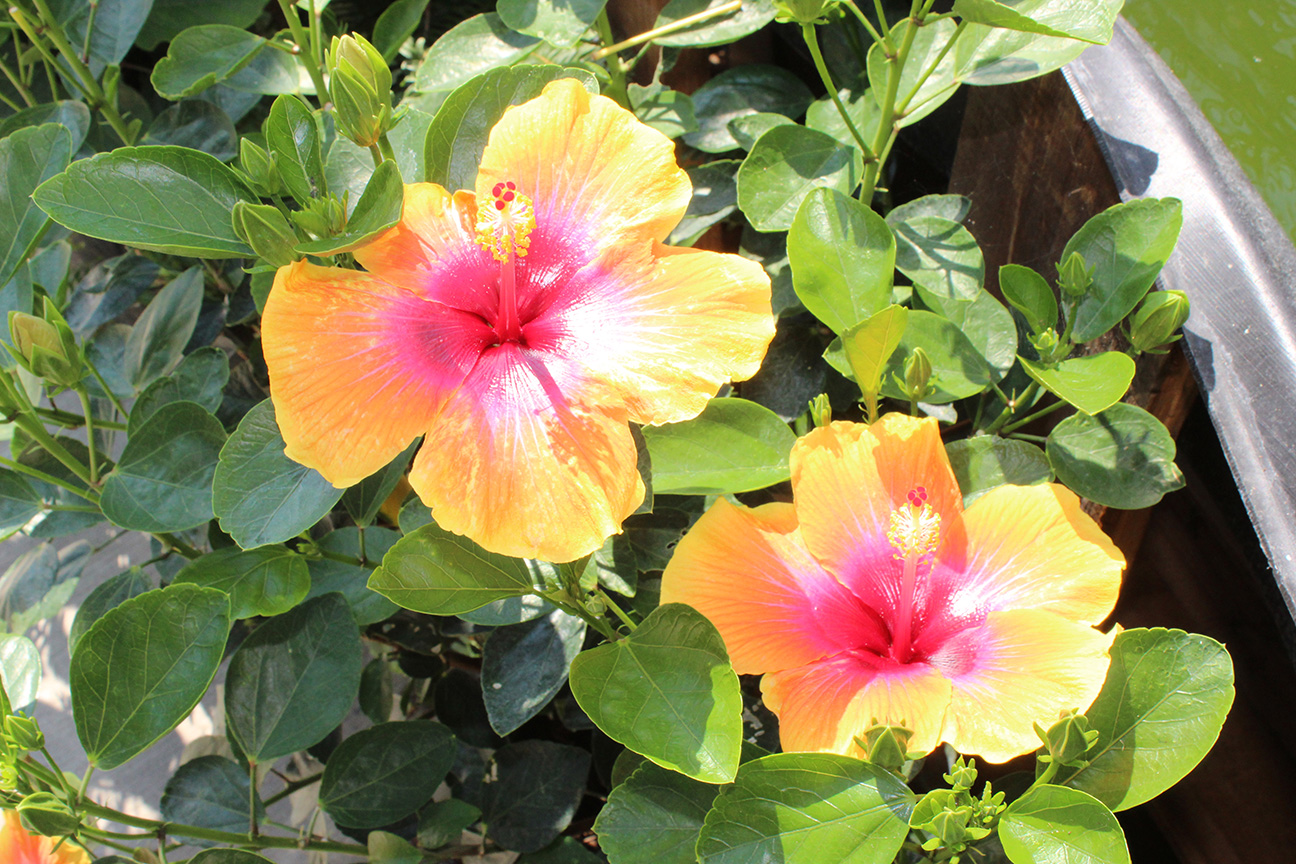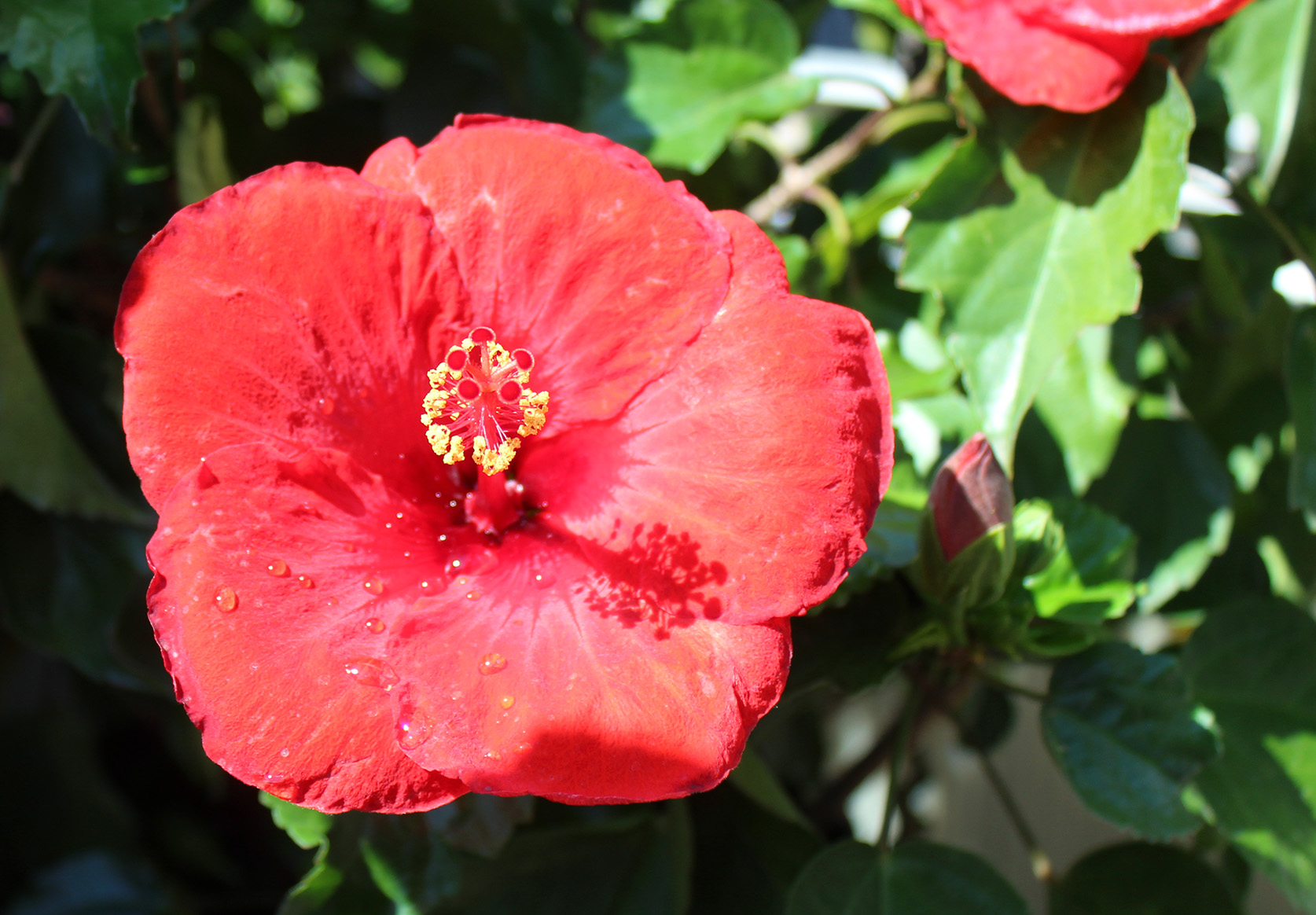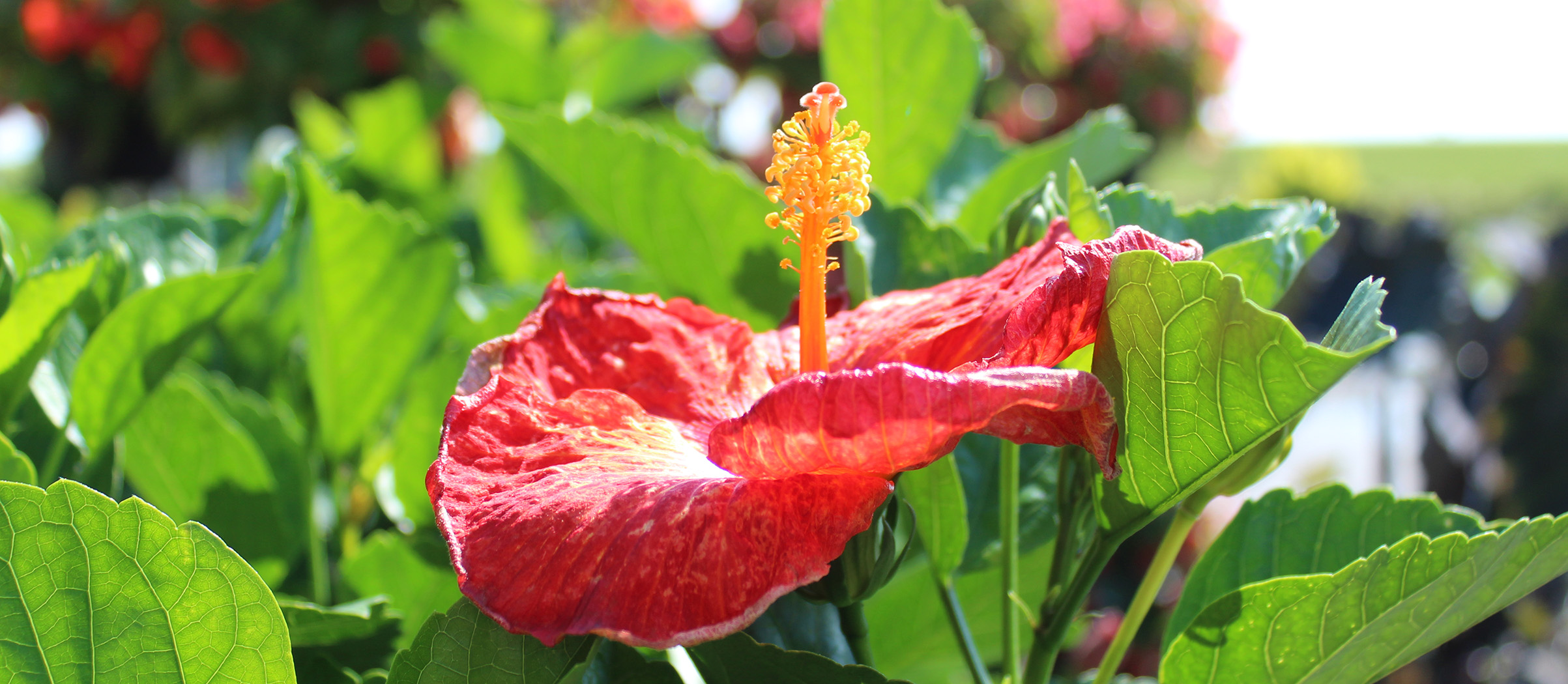Potting & Planting
It’s important to re-pot it or plant it in the ground. The pots you purchase them in are often too small and, thus, can only hold so much water. Replanting it will allow it to get and retain the moisture it needs to flourish.
In a container: Hibiscus do prefer to have their roots crowded a little, so choose a container that is a little bigger than its original pot rather than much bigger. Also make sure your container has holes, so excess water can escape out of the bottom. It’s best to repot your hibiscus using a well-drained potting mix for best soil retention and good drainage.
In the ground: When planting, make sure to loosen up the soil and create a hole about twice as wide as your pot and about the same depth as your pot. Remove your Hibiscus plant from its container and loosen the roots at the bottom. If your soil is very compact, consider adding some compost to loosen it up.




